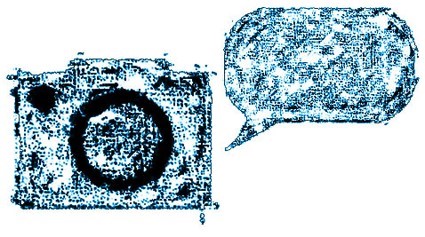Photovoice, giving a voice to the unheard

During my two-week visit as a visiting scientist to Karlsruhe, I had the opportunity to meet with Karlsruhe Transformation Centre KAT at ITAS. We discussed various topics related to participation and sustainability transformations, and had fruitful conversations on ways to effectively involve citizens in transformative actions. I also cover these topics in my work at Corvinus University of Budapest.
When engaging in public participation, we often find that certain marginalised groups in society are excluded from the process. Even if the participation is inclusive, such as a citizen assembly, it tends to attract well-educated citizens from middle or higher-income classes. It can be challenging to invite underprivileged groups to participate because deliberation requires communication skills and a level of self-expression to engage in discussions with others. While the digitalisation of participatory processes can improve accessibility in terms of time and space, it can also create new inequalities for disadvantaged groups due to the digital divide. This was evident in the case of participatory budgeting during the pandemic, as highlighted in our study (Kiss et al 2023).
Otherwise, there are participatory tools, that are developed especially for marginalised groups and can serve research aims as well. One of these participatory action research tools is PhotoVoice. Photovoice is a process in which participants use photographs to present the most significant problems affecting their community. The process involves a training session, where participants learn how to take photos that capture the theme, moment, and phenomenon they wish to present. After taking the photos, the participants then engage in a group discussion where they explain the images they have prepared. These stories are the interpretations of the images that are created by the community. The participants then select the photos that best represent the most important topics in their lives and that they want to show to the wider community. These selected photos and their interpretations are the results of the process, which will be presented to the decision-makers.
The aim of photvoice is threefold: to enable people (1) to document and reflect their community's strengths and concerns, (2) to promote critical dialogue and knowledge about common problems through group discussion, and (3) to reach policymakers (Wang and Burris, 1997). As a result, Photovoice can give a voice to those who rarely participate in decision-making, making it a powerful tool for community engagement.

Gabriella Kiss was part of the yearly conference of Urban Europe Research Alliance (UERA), during which she presented her work about international exchange regarding paticipation and sustainability. Read more.
Further information:
Kiss, G., Csukás, M., Oross, D. (2023). Participatory Budgeting in Budapest: Navigating the Trade-Offs of Digitalisation, Resilience, and Inclusiveness Amid Crisis. In: Edelmann, N., Danneels, L., Novak, AS., Panagiotopoulos, P., Susha, I. (eds) Electronic Participation. ePart 2023. Lecture Notes in Computer Science, vol 14153. Springer, Cham. More
Caroline Wang and Mary Ann Burris (1997) Photovoice: Concept, Methodology, and Use for Participatory Needs Assessment. Health Education & Behavior, Vol. 24, No. 3, pp. 369-387. More
